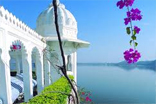 Newsletter OCTOBER 2016 |
|
|
 Hot Destination
- Kolkata Hot Destination
- Kolkata |
History
|
 Newsletter OCTOBER 2016 |
|
|
 Hot Destination
- Kolkata Hot Destination
- Kolkata |
History
|